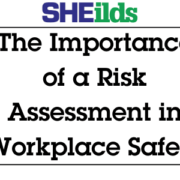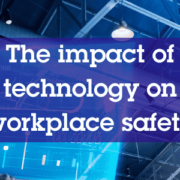The Role of Management in Promoting Workplace Safety
Managements Role in Promoting Workplace Safety
Management plays a crucial role in establishing and maintaining a safe work environment. They are responsible for setting the tone for workplace safety and ensuring that employees are equipped with the knowledge, skills, and resources necessary to perform their tasks safely. In this article, we will explore the various ways in which management can contribute to promoting workplace safety and fostering a positive safety culture.
1. Setting the Tone
Management is responsible for establishing a safety culture within the organisation. By demonstrating a commitment to safety and leading by example, managers can create an environment in which safety is a top priority and employees feel empowered to take responsibility for their own well-being. Investing in the professional development of managers through courses like the IOSH Managing Safely equips them with the necessary knowledge and skills to effectively manage health and safety in the workplace. This comprehensive course covers essential topics such as risk assessment, hazard identification, and incident investigation, providing managers with the tools they need to proactively mitigate risks and promote a safe working environment. By completing the IOSH Managing Safely course, managers not only enhance their own capabilities but also contribute to the development of a strong safety culture within the organisation.
2. Developing Policies and Procedures
Managers play a key role in developing and implementing safety policies and procedures. These policies should be clear, concise, and easily accessible to all employees. In addition, management should regularly review and update these policies to ensure they remain relevant and effective.
3. Training and Education
It is essential for management to ensure that employees receive the appropriate safety training and education. This may include providing access to relevant courses, such as IOSH or NEBOSH training, as well as conducting regular safety briefings and toolbox talks.
4. Communication
Effective communication is critical to promoting workplace safety. Managers should maintain an open dialogue with employees about safety concerns and encourage a culture of reporting incidents and near misses. This will help to identify potential hazards and implement corrective actions before an accident occurs.
5. Monitoring and Enforcement
Management is responsible for monitoring compliance with safety policies and procedures and taking action when necessary. This may involve conducting regular safety inspections, reviewing incident reports, and addressing non-compliance through appropriate disciplinary measures.
6. Continuous Improvement
Promoting workplace safety is an ongoing process. Managers should be committed to continuously improving their organisation’s safety performance by analysing data, identifying trends, and implementing targeted interventions.
The Role of Management
Management plays a critical role in promoting workplace safety and fostering a positive safety culture. By setting the tone, developing policies and procedures, providing training and education, and ensuring effective communication and enforcement, managers can help to create a safe and healthy work environment for all employees.











Leave a Reply
Want to join the discussion?Feel free to contribute!